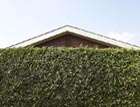Reasons to keep in trim
Laws about keeping foliage under control are a thicket, says Roger field


Leaf on bush and tree heralds the arrival of spring, as does the annual West Sussex County Council press release alerting property owners to the hazards of foliage that obscures road signs and lights, and obstructs pavements. This year, however, West Sussex is to trial a new system. Two warning letters are sent, a date set and then, if the nuisance has still not been satisfactorily dealt with, the council will use its own workmen and send the bill to the householder. The Highways Act 1980 sets out the regulations and responsibilities governing trees and bushes overhanging highways or which endanger or obstruct road users. Thus, when a refrigerated lorry was ?speared? on a nearby local road by an overhanging branch, it was the property owner who was liable. What the act does not do is set down rules for heights and widths. Ralph Wright, highways manager at Crawley, explains that the guidance?not regulations, he is at pains to point out?is that over the road itself and 1m back from the edge of the asphalt, there should be a minimum 6m of overhead clearance. Moving back from there, across the pavement or verge, there should be a minimum of 2.5m: ?Probably so that a tall man in a top hat could walk without interference,? he postulates. However, it is not enough just to comply with these heights. Property owners have a duty of care to those who pass under trees and bushes belonging to them. Old or storm-damaged trees or broken branches in the canopy present obvious dangers to those below. Time is fast running out for environmentally friendly cutting which should be done in autumn and winter because of the risk to nesting birds. However, it is better to cut at the ?wrong? time than risk causing an accident. Owners with queries should telephone the area office of their local council, the Department for the Enviornment, Food and Rural Affairs helpline on 08459 33 55 77, or English Nature on 01273 476595. This article was originally published in Country Life magazine, March 24, 2005. To subscribe click here.
Sign up for the Country Life Newsletter
Exquisite houses, the beauty of Nature, and how to get the most from your life, straight to your inbox.
Country Life is unlike any other magazine: the only glossy weekly on the newsstand and the only magazine that has been guest-edited by HRH The King not once, but twice. It is a celebration of modern rural life and all its diverse joys and pleasures — that was first published in Queen Victoria's Diamond Jubilee year. Our eclectic mixture of witty and informative content — from the most up-to-date property news and commentary and a coveted glimpse inside some of the UK's best houses and gardens, to gardening, the arts and interior design, written by experts in their field — still cannot be found in print or online, anywhere else.
-
 380 acres and 90 bedrooms on the £25m private island being sold by one of Britain's top music producers
380 acres and 90 bedrooms on the £25m private island being sold by one of Britain's top music producersStormzy, Rihanna and the Rolling Stones are just a part of the story at Osea Island, a dot on the map in the seas off Essex.
By Lotte Brundle
-
 'A delicious chance to step back in time and bask in the best of Britain': An insider's guide to The Season
'A delicious chance to step back in time and bask in the best of Britain': An insider's guide to The SeasonHere's how to navigate this summer's top events in style, from those who know best.
By Madeleine Silver